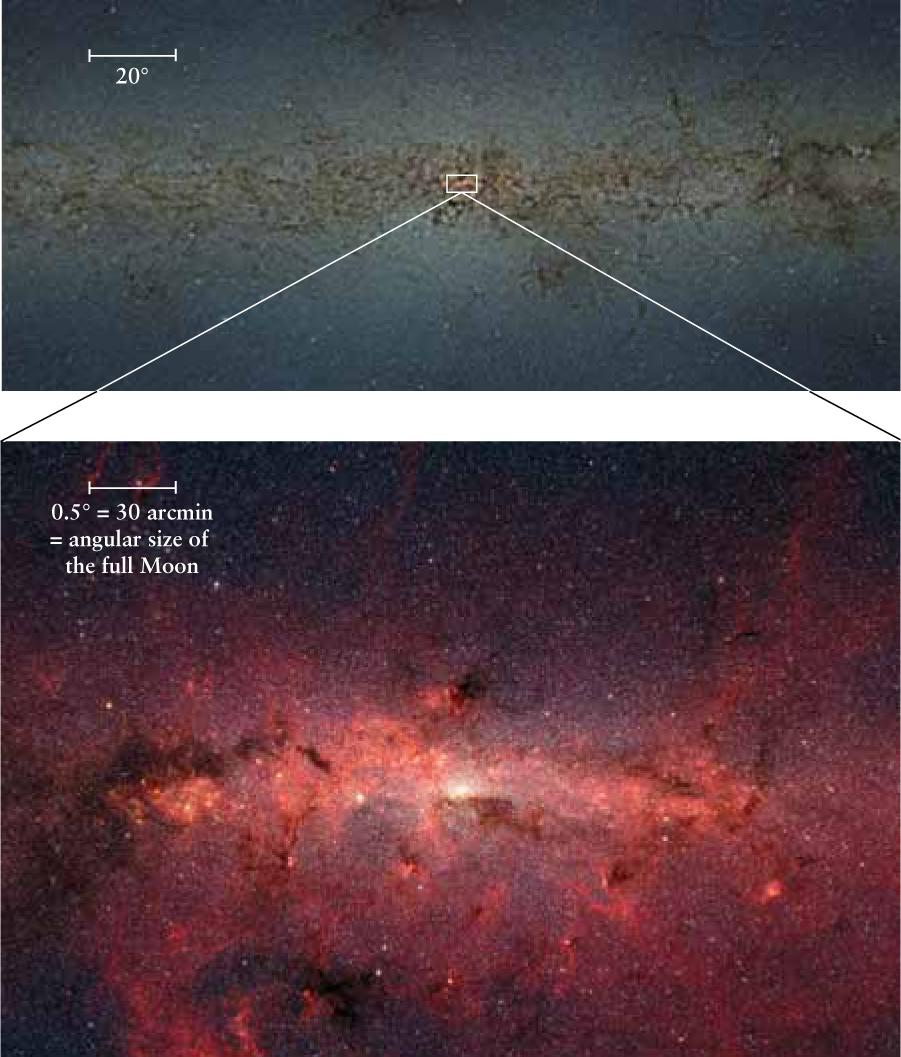635
CHAPTER
22

Our Galaxy
LEARNING GOALS
By reading the sections of this chapter, you will learn
| 22–1 | How astronomers discovered the solar system’s location within the Milky Way Galaxy |
| 22–2 | The shape and size of our Galaxy |
| 22–3 | How the Milky Way’s spiral structure was discovered |
| 22–4 | The evidence for the existence of dark matter in our Galaxy |
| 22–5 | What causes the Milky Way’s spiral arms to form and persist |
| 22–6 | How astronomers discovered a supermassive black hole at the galactic center |
On a clear, moonless night, away from the glare of city lights, you can often see a hazy, luminous band stretching across the sky. This band, called the Milky Way, extends all the way around the celestial sphere. The upper of the two accompanying photographs is centered on the brightest part of the Milky Way, in the constellation Sagittarius.
Galileo, the first person to view the Milky Way with a telescope, discovered that it is composed of countless dim stars. Today, we realize that the Milky Way is actually a disk tens of thousands of parsecs across containing hundreds of billions of stars. (It is hard to picture hundreds of billions of stars, but it is about the number of grains in a few trashcans full of beach sand.) Between the stars, there are also large quantities of gas and dust. One of these stars is our Sun, and this vast assemblage of matter—our home galaxy—is collectively called the Milky Way Galaxy.
Just as Galileo’s telescope revealed aspects of the Milky Way that the naked eye could not, modern astronomers use telescopes at nonvisible wavelengths to peer through our Galaxy’s obscuring dust and observe what visible-light telescopes never could. For example, the lower of the two accompanying photographs is an infrared image that shows hundreds of thousands of stars near the center of the Galaxy. As we will see, radio, infrared, and X-ray observations reveal that at the very center of the Galaxy lies a black hole with a mass of 4.1 million Suns.
636
Modern astronomers have also discovered that most of the Milky Way’s mass is not in its stars, gas, or dust, but in a halo of dark matter that emits no measurable radiation. What the character of this dark matter could be remains one of the greatest unanswered questions in astronomy and physics.
The Milky Way is just one of myriad galaxies, or systems of stars and interstellar matter, that are spread across the observable universe. By studying our home galaxy, the Milky Way Galaxy, we begin to explore the universe on a grand scale. Instead of focusing on individual stars, we look at the overall arrangement and history of a huge stellar community of which the Sun is a member. In this way, we gain insights into galaxies in general and prepare ourselves to ask fundamental questions about the cosmos.